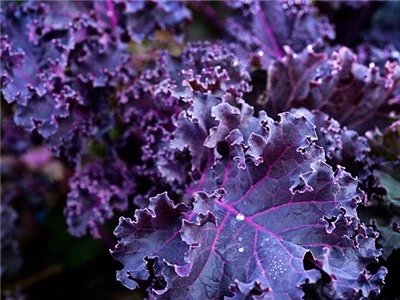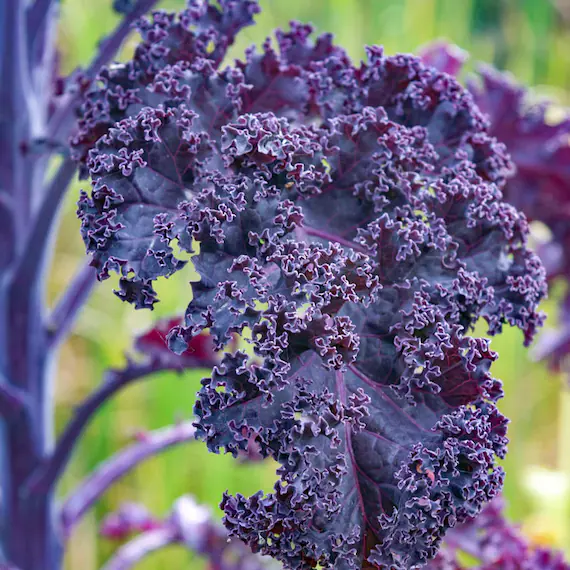Exploring Kale
- Laykin

- Jul 4
- 3 min read
Did you know that there's plenty different kinds of kale, each having their own unique uses in the culinary world? Many of them have interesting health benefits as well! In this blog, I want to share my research on these greens with you. I have taken a look at four different kinds of kale, some of which we have right here on the farm!
Lacinato Kale
First up, we have Lacinato Kale, also known as Dinosaur Kale or Tuscan Kale. Lacinato Kale is an Italian kale, originally grown in Tuscany. You can easily tell which one it is based solely on the looks of the kale. It's described as a dark green, blade shaped leaf with a bumpy texture. It is not as bitter as curly kale and actually has a sweetness and nuttiness to it that other types of kale don't have. Another unique trait of the Lacinato Kale is that it's tender, making it the best variety of kale to use raw. This is the best kale to use in salads or soups thanks to its tenderness. If you want to cook with this type of kale, you can easily sauté it or add it into a pasta. One amazing recipe is this baked tofu with coconut kale! The Lacinato Kale is also very high in minerals like zinc and magnesium, which are under-consumed in most people's diets.
Winterbor Kale
Next, there is Winterbor Kale, a curly kale with bluish-green leaves. This kind of kale originates from Eastern Mediterranean and Asia Minor. Winterbor is one of the more well known types of kale, as it is used more often than others due to the thickness of the leaves. The taste tends to be pretty bitter when eaten raw but cooking these greens bring out a subtle sweetness. Since the leaves are thicker than other kinds of kale, it's better to cook them and boy, are there a variety of ways to cook them! Kale chips are one of the most popular ways to use Winterbor Kale. Stir Fry is one of my favorites, so I recommend you try it out! Winterbor Kale is a great source of calcium, potassium, and iron!
Scarlet Kale
Scarlet Kale, much like the Lacinato, can be identified easily. They have vibrant scarlet or purple leaves and stalks that transitioned from a deep green when the weather cools down. Scarlet Kale was developed through selective breeding in Europe. This kale has an earthy but mild, cabbage-like taste to it. The young leaves are delicious when eaten raw while the more mature leaves are better when cooked. If you want to keep the beautiful color, toss it in a salad raw or blend it into a smoothie! Cooking the Scarlet Kale will cause it to fade into a dark green color, but it will bring out an amazing flavor. You can make plenty of great and fun things like lasagna or latkes! Scarlet Kale has plenty of essential minerals and is packed with Vitamins A, C, and K. It also supports immune function and fights inflammation.
Red Russian Kale
Lastly, we have Red Russian Kale, which originates from Russia. They have slate green leaves and dark purple stems, giving them a very distinctive look. For this type of kale, it is most commonly eaten in the baby leaf stage, which is when the kale is not quite mature and the leaves are small and young. Even though this is when they are usually eaten, you can always use them when they are fully mature as well. You can braise Red Russian Kale, throw it into a salad, or even cook it into a risotto or savory breakfast bake. This kale is full of antioxidants, which helps with boosting your immune system and supports bone and eye health.
You can easily substitute one type of kale for another in most recipes. On the farm, we have Lacinato Kale, Starbor Kale, and Redbor Kale, so come visit us on Saturdays from 9am to 1pm at the Chocolates and Tomatoes Farm Market! And don't be shy, let us know what you're looking for or if you try any of the recipes using our kale! Hope to see you soon!



















Comments